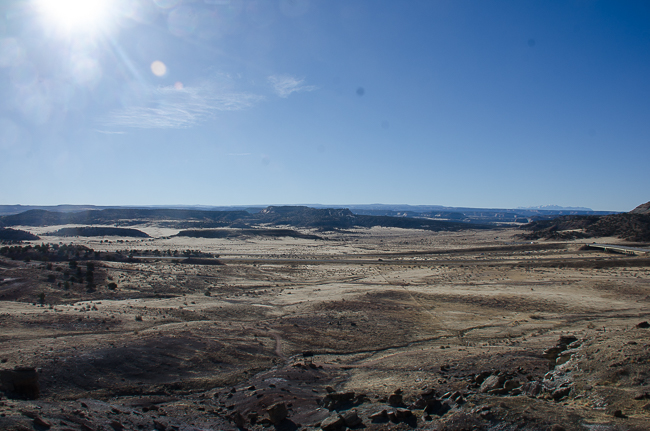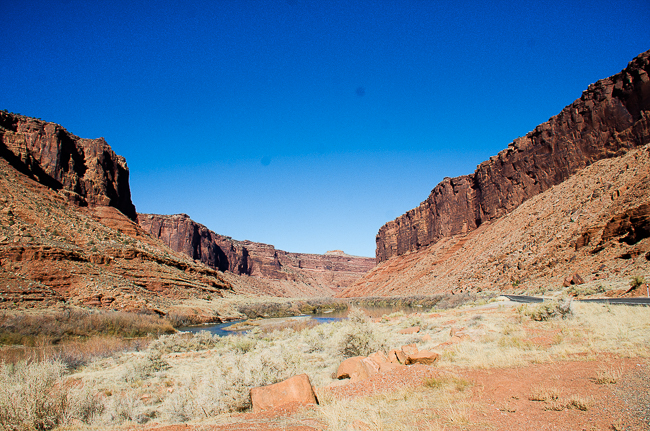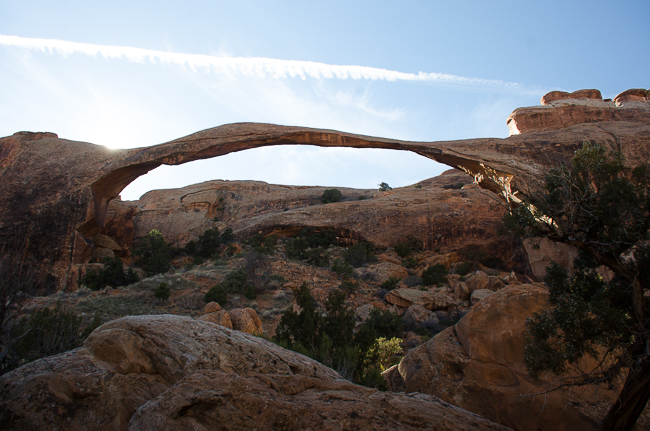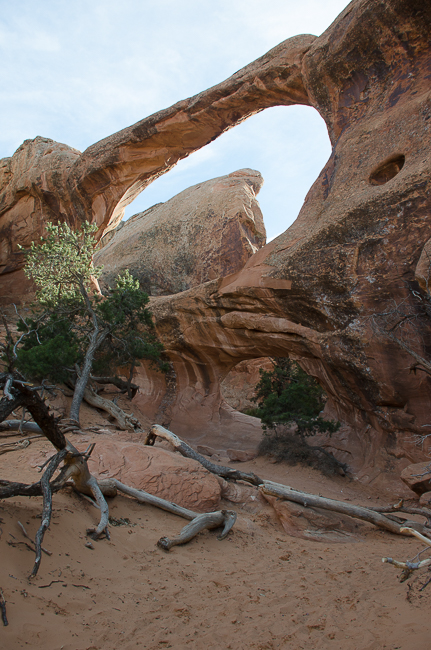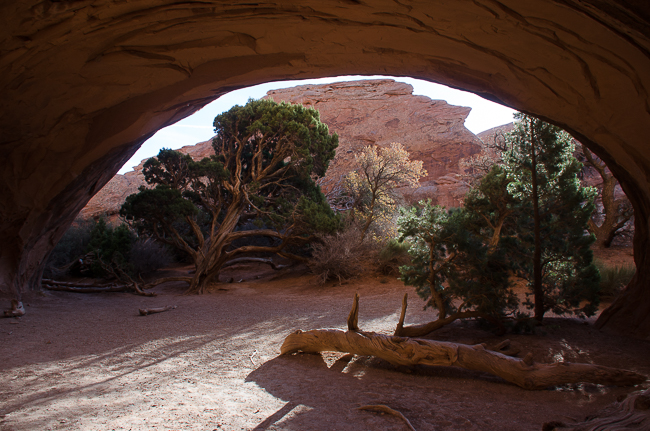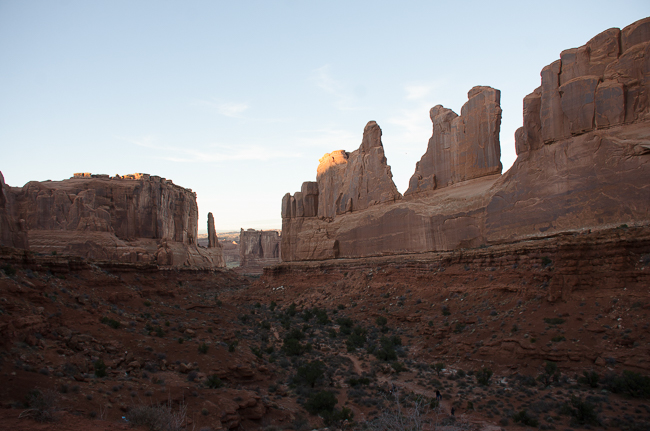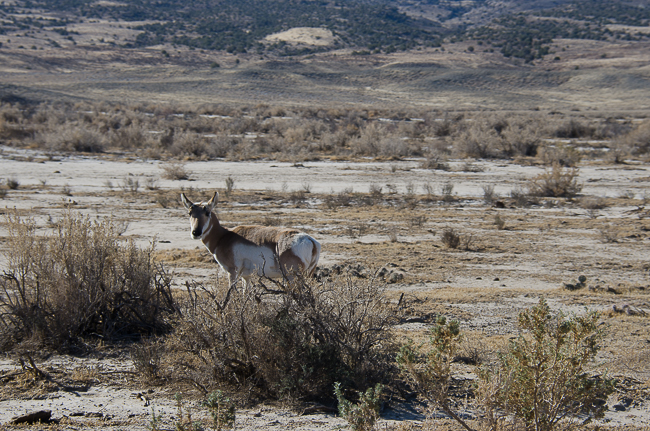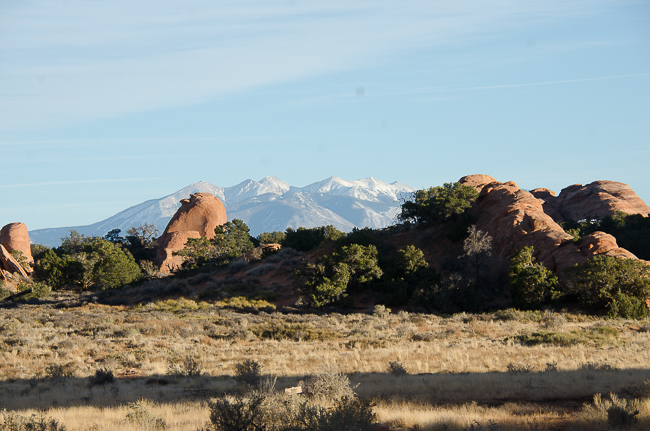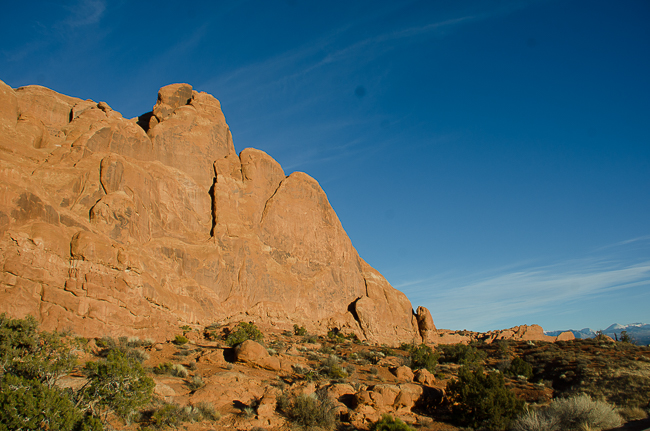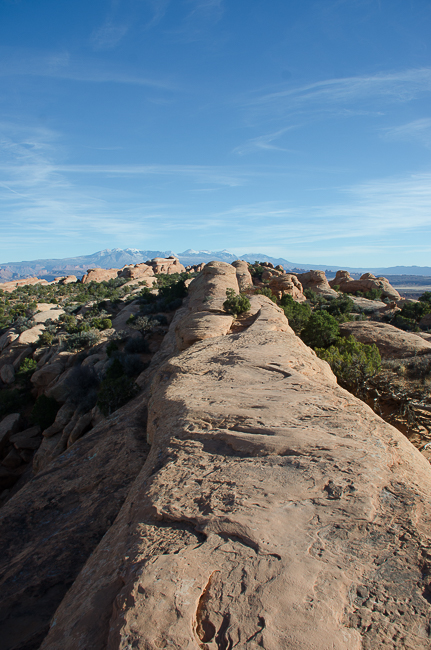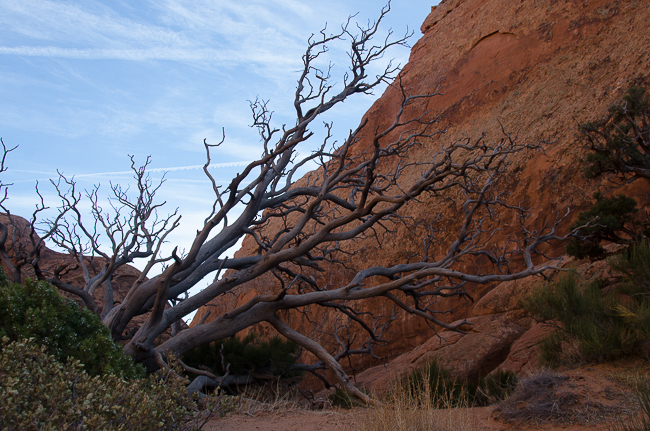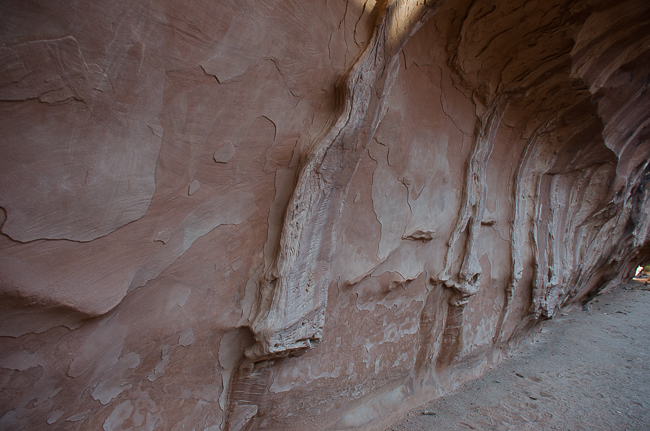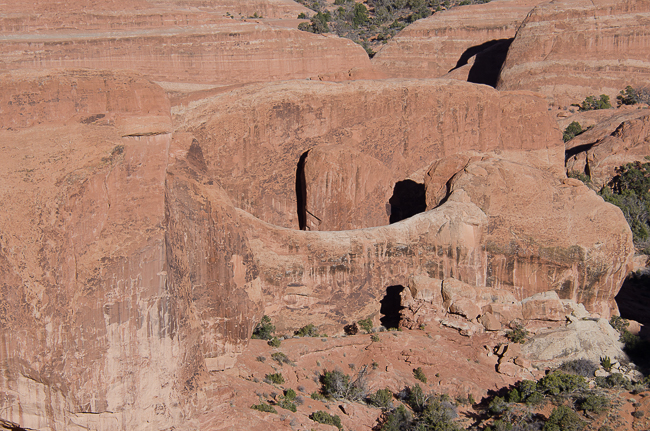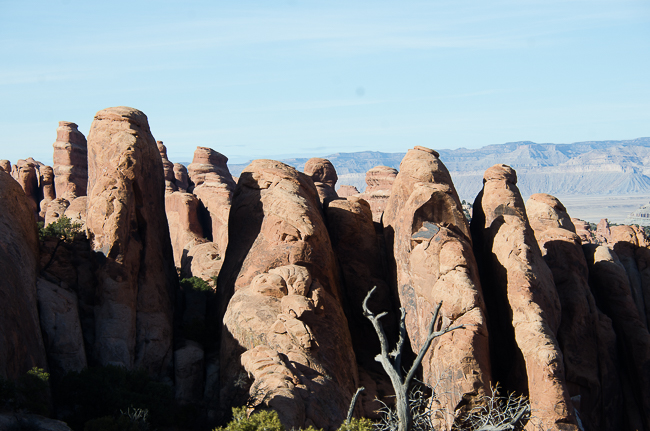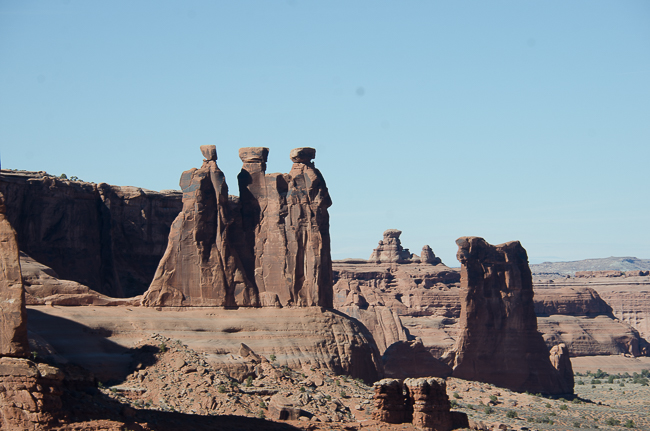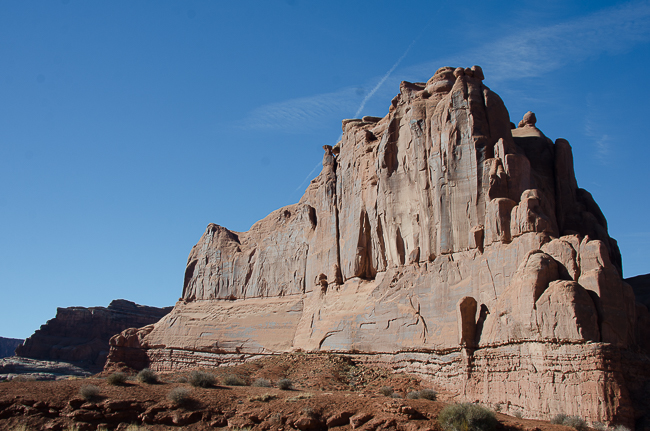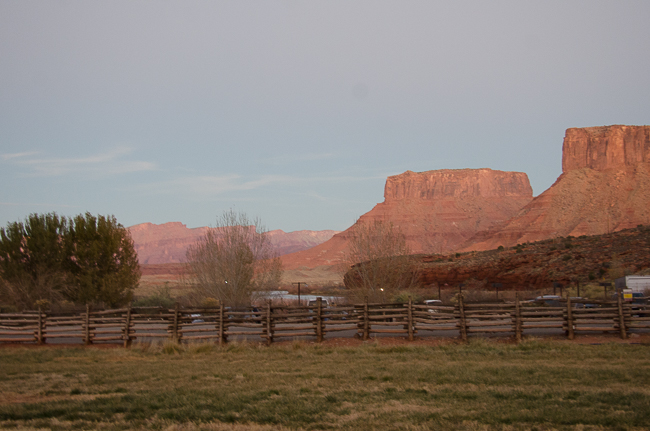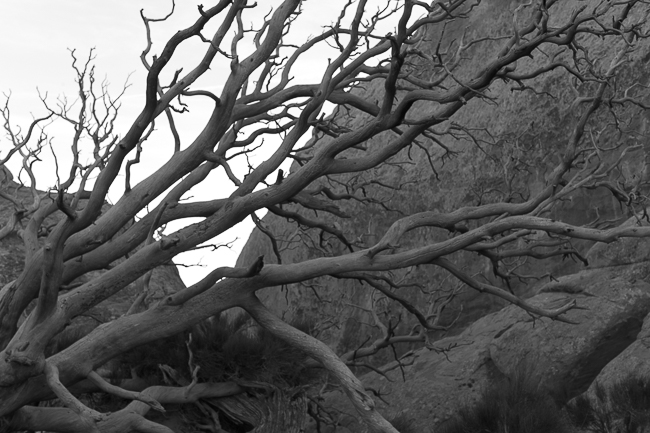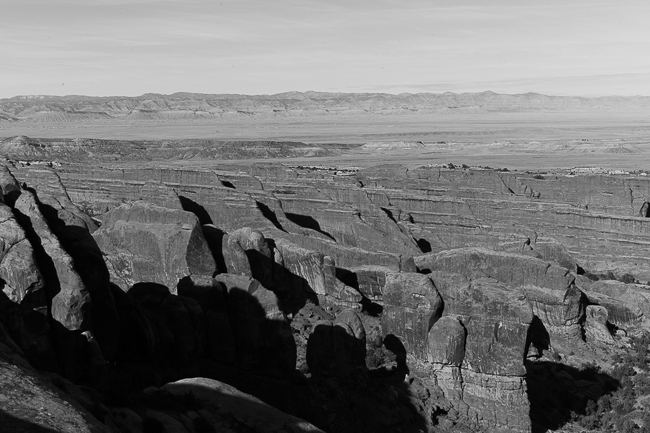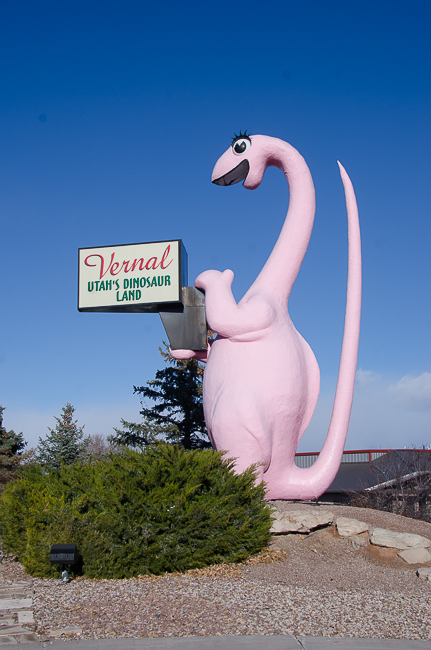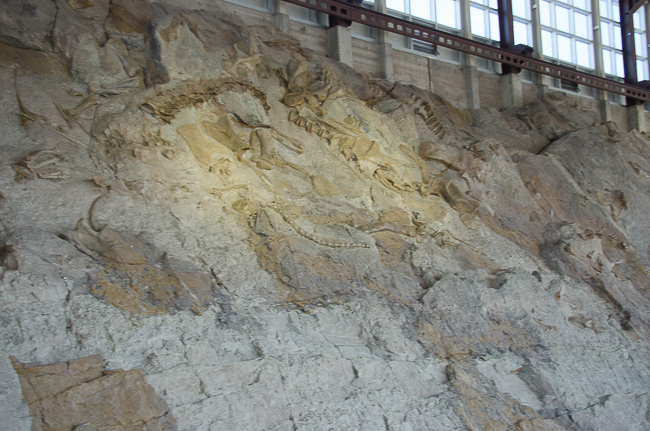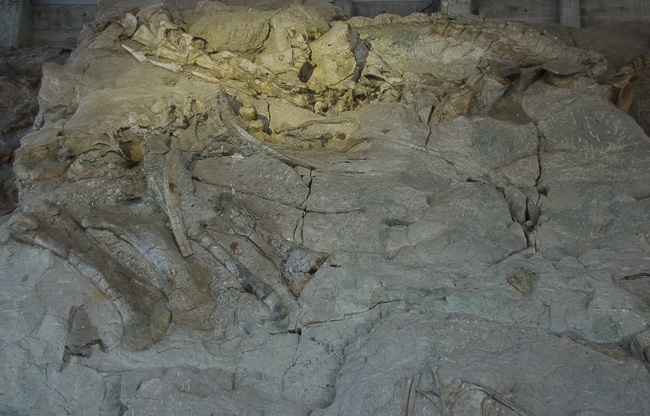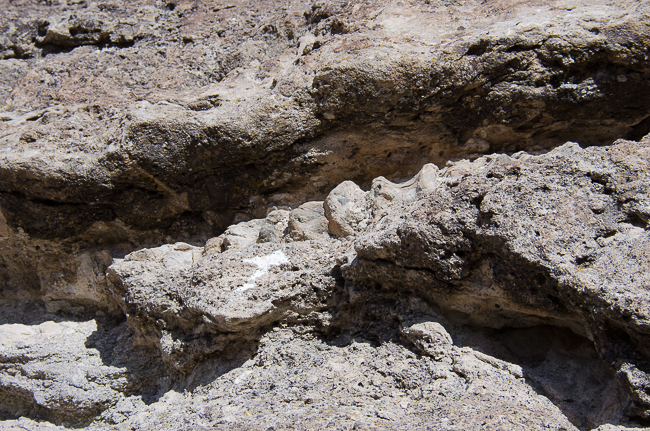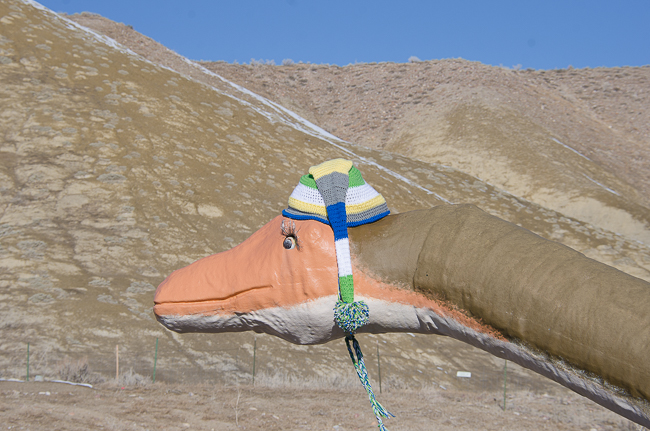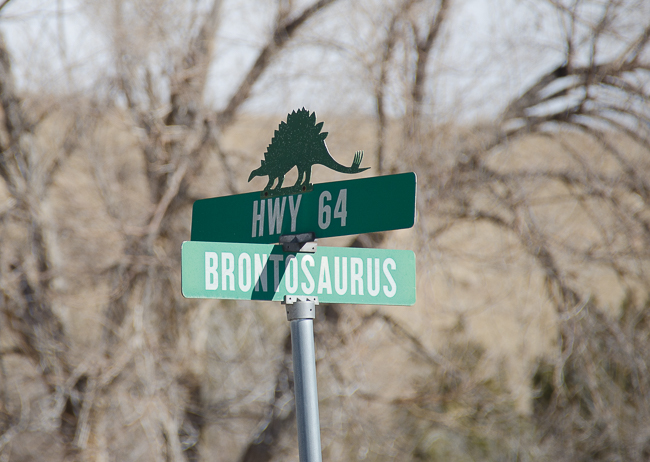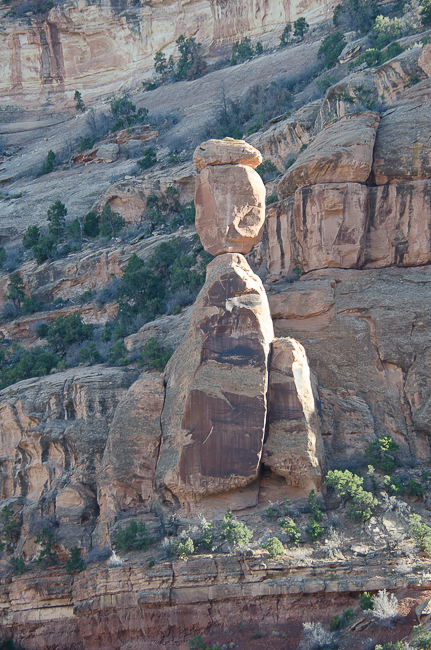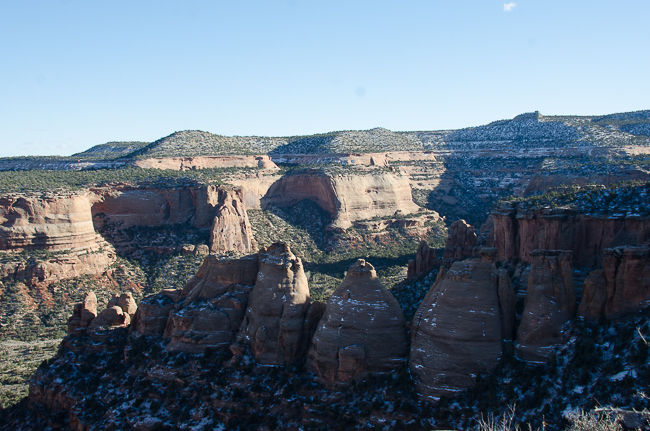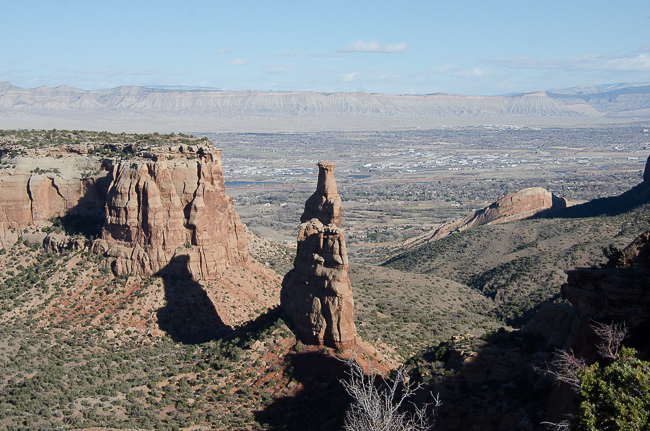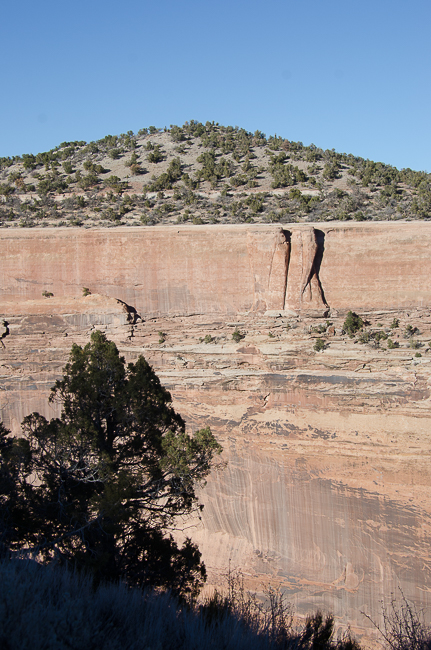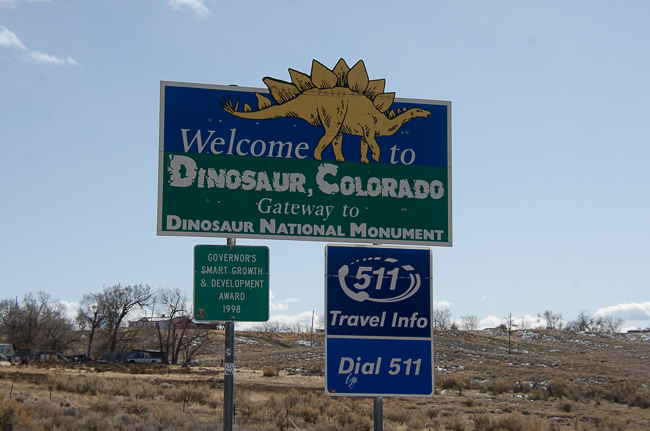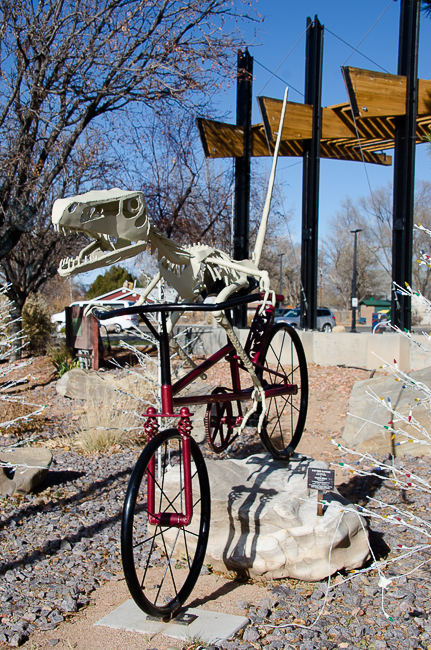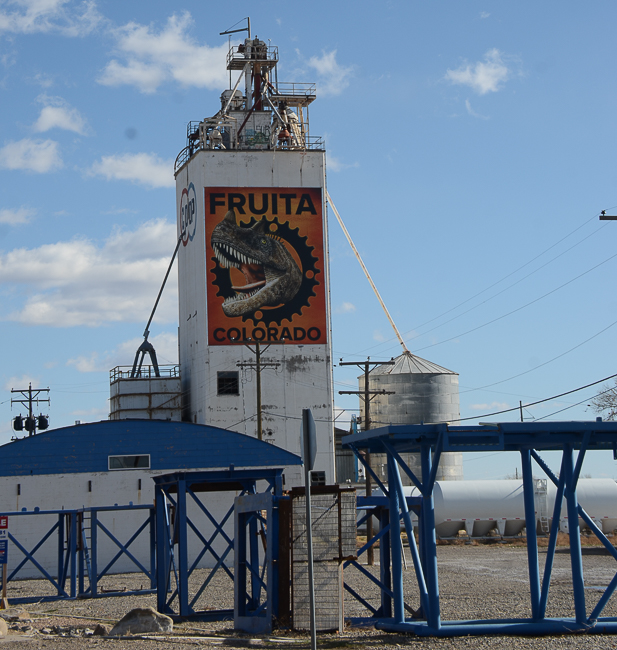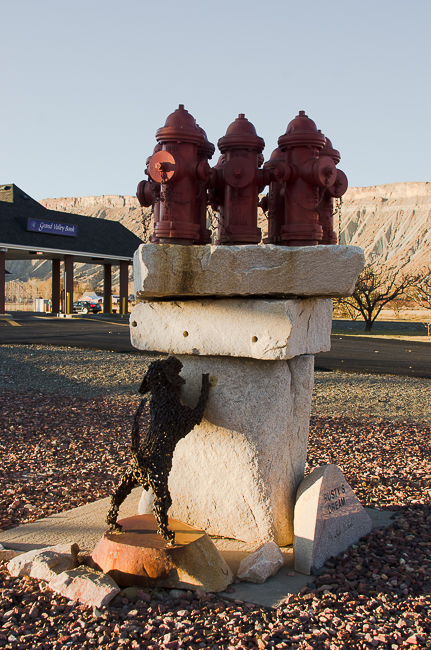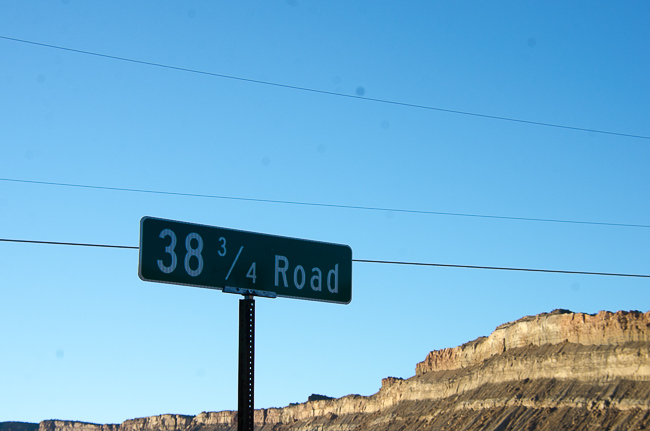November 15, 2020
Today began with a drive from Palisades, Colorado to Arches National Monument in Utah.
We took the 139 which is all part of the Dinosaur laden area of Colorado. When one drives for miles without seeing another car you either become fascinated with the geology, or you turn on rock and roll and go with it. We chose geology. I had purchased the Roadside Geology of Colorado and of Utah, I read Pam drove. We don’t understand half of what we learned, so I won’t bore you with the details, but I will throw some of it out, as it is part of what makes this part of the US so absolutely gorgeous and interesting.
We began with a long drive through vast spaces ringed by book cliffs. The valley holds oil, gas, and oil shale. During the boom times, there was a lot of activity in this area, it is all gone, and the remnants have been moved out as well, giving us the beauty without the commerce.
We crossed into Utah and the WOW factor began. Our first Wow was the Dewey Bridge.
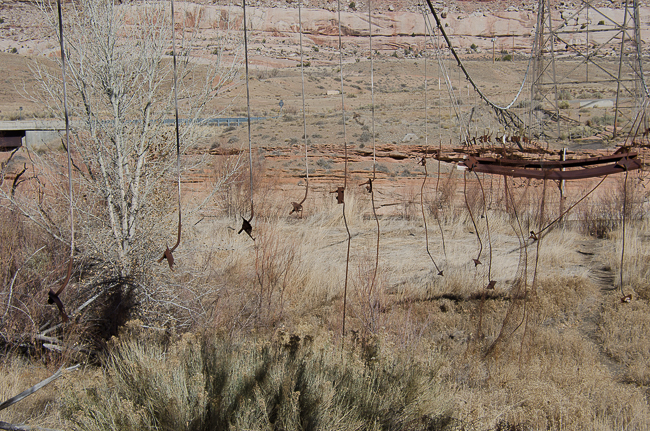
The Dewey Bridge was originally brought in pieces from Chicago in 1916 and assembled across the Colorado River. For a short period of time, it was the second-longest suspension bridge west of the Mississippi. It was designed to support the weight of 6 horses, 3 wagons, and 9000 pounds of freight.
The bridge featured an all-wood deck measuring 502 feet long, 10.2 feet wide from support to support, and 8 feet wide from rail to rail. The bridge also consisted of two metal towers, a run of seven cables on each side of the bridge deck, and cable anchors. The old Dewey Bridge was restored in 2000 and then burned on April 2008 by a 7-year-old playing with matches.
Then we began driving with cliffs on both sides and the Colorado River to our right. This is where the sandstone begins. We took 128 to get to our hotel for the night, The Redcliffs Lodge. The trip begins with Dakota Sandstone and a lot of uplifting, tumbling, and tossing about of the rocks that make up this area. A little further along one begins to encounter Entrada Sandstone, then they begin to layer atop each other. There is a lot of discussion of the fact that this all took place from the Quaternary to the Precambrian ages. If you want to know more I highly suggest you grab the book, it makes Utah amazing, but it is highly complicated as well.
We finished our day with a several hour walk to see some of the arches of Arches National Monument. We headed to the far end of the park called Devils Garden and saw Landscape Arch, Navajo Arch, Partition Arch then continued to hike to the Double O Arch. We gave up at that point, it is a wonderful hike, but we felt we had seen what we had come to see, many will argue that by not finishing the loop we cheated, but we were happy.
A stop on the way out of the park at a small area called Park Avenue and onto our hotel.
Here is the rest of what we saw, that I do not believe needs much explanation.
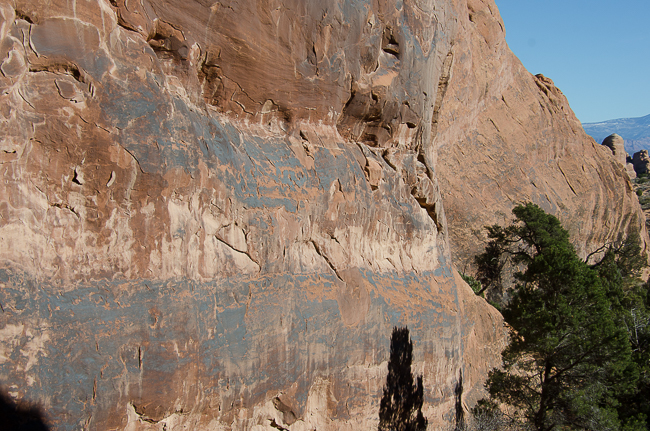
This blue was rather stunning. It is called desert varnish and is a result of iron mixing with manganese. It normally looks black, but catching it in just right in the sun, made it worth photographing.
*
I also shot a few in Black and White
We have plans to go back tomorrow to catch Delicate Arch and then on to the next adventure.
